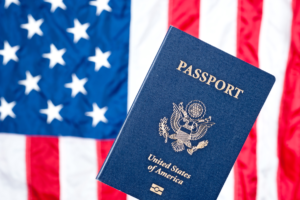Tax Relief Courtesy of Hurricane Harvey

While Hurricane Harvey continues to devastate the Gulf Coast, Texans can expect to receive a little extra relief this upcoming tax year from Uncle Sam. Taxpayers in the federally declared disaster area have the option of claiming disaster-related casualty losses for either the year that the event occurred or the year prior. This means that those whose homes were affected by wind or flood damage can deduct the damages from either this year or the last year’s tax returns. In many cases, amending last year’s returns results in an immediate tax refund which can be then used to live on or begin repairs. However, the option of amending last year’s return may not be for everyone since the IRS does have two rules that must be followed for casualty claims. The first is that the amount of damage claimed must first be deducted by $100. Then the total casualty losses must be reduced by 10% of your adjusted gross income. If you qualify for writing off a loss the process is fairly simple. First, you will need the proper forms. These are the long Form 1040, Form 4684 to determine and report your casualty loss and Schedule A to itemize your loss deduction. If you are planning on amending your 2016 return you will need to use Form 1040X instead of the long Form 1040. You will then need to determine how the damages incurred have affected your property’s fair market value. This is done through determining how much your property is worth immediately prior to the disaster and comparing it to what it is worth immediately after the disaster. The latter part of this will need to be through a professional appraiser. The difference between these two amounts is your loss from casualty. You can then utilize Form 4684 to determine the deductible amount of your casualty loss.
If you have insurance on your property you must first file a claim to use the damage as a casualty loss. Any money that you receive from the insurance company must then be deducted from the casualty loss amount. All insurance payments must be used to repair, or replace your property or any excess could be counted as a taxable gain to you.
Throughout all of this remember to keep documentation of everything! While the IRS may give disaster victims some leeway, they do require that casualty losses be substantiated and supported. This will also be of great value to you if you ever get audited in the future.
Consult with your tax advisor to determine which option would be best for you and your family.
For more on how to claim your casualty losses (click here).
Want to Keep Your Passport – Pay Your Tax Debt
Want to Keep Your Passport – Pay Your Tax Debt. Are you planning an exciting vacation abroad any time soon, or an important overseas business trip? Before you leave the country, you better make sure you don’t owe any back taxes. The IRS recently reminded taxpayers that if they have a tax debt of greater…
Trust Your Tax Return to the Professionals
A question millions of US citizens annually ask themselves prior to April 15th. Should you DIY or trust your tax return to the professionals? Every year many thousands of modest, honest and hardworking US citizens discover they owe the IRS still more money upon completion of their tax returns. It’s a lousy feeling. Now imagine,…
Dawn LeBlanc – Managing Director at Hartford InsurTech Hub
Dawn is the Managing Director at Hartford InsurTech Hub. She has Diversified expertise across insurance/financial products, innovation, marketing, regulatory, actuarial, operations, distribution and technology. Prior to joining Hartford InsurTech Hub she was the Vice President Business Solutions at Prudential Financial. Dawn attended Central Connecticut State UniversityWhere she received her Bachelor’s in Science in Mathematics/Actuarial
Avishai Ben-Tovim | CEO of MDI Health
Avishai Ben-Tovim is a sales & business development executive with years of professional experience and a drive to succeed and to innovate. He holds an IT Engineering degree from Ben-Gurion University of the Negev as well as an MBA from Tel Aviv University. Over the course of his career, he has worked extensively within the sales and technology sectors and held a variety of technical and management roles with companies like Kenshoo, eToro, Google and Roundforest, the latter of which he acted as




